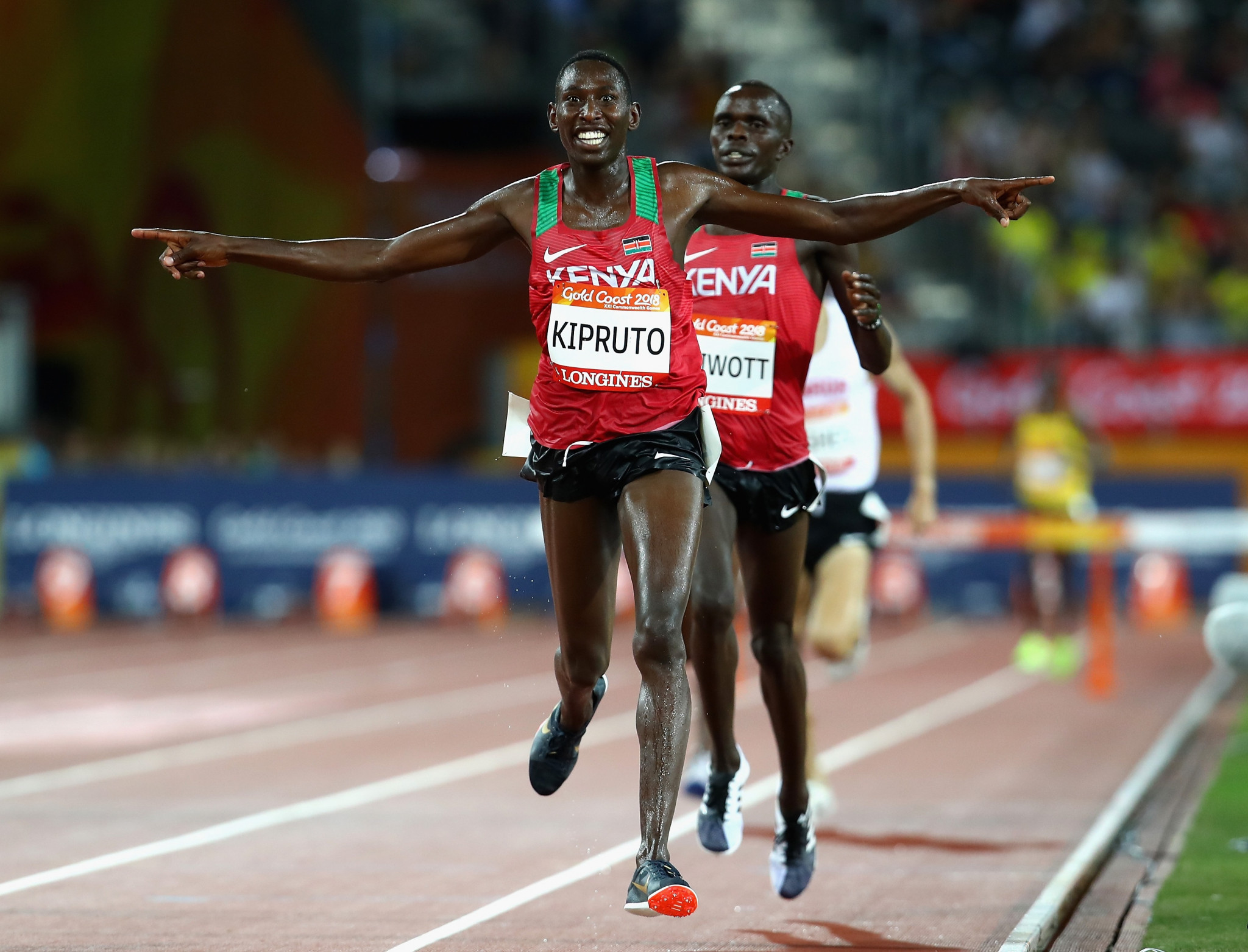

Featured
What Are Endurance Runners Superior In
Modified: January 22, 2024
Learn why featured endurance runners are superior and what sets them apart from the rest. Discover the secrets to their remarkable fitness and endurance levels.
Introduction
Endurance running is a sport that pushes the limits of human physical capabilities. From marathon runners to ultra-distance athletes, endurance runners showcase remarkable stamina, mental fortitude, and superior physiological adaptations. What makes these athletes so exceptional in their ability to sustain prolonged periods of intense exercise?
In this article, we will explore the fascinating physiology of endurance runners and shed light on the factors that contribute to their superior performance. By understanding the unique characteristics that set endurance runners apart, we can gain insights into the physical and mental attributes required to excel in this demanding sport.
Endurance running challenges the body’s ability to maintain effort over extended distances and time periods. Athletes who participate in marathons, ultramarathons, and other endurance running events endure grueling physical and mental challenges, requiring them to sustain high levels of performance for hours on end.
As we delve into the physiology of endurance runners, we will uncover the secrets behind their exceptional aerobic capacity, efficient oxygen utilization, and high concentration of slow-twitch muscle fibers. Additionally, we will explore how their increased mitochondrial density, enhanced anaerobic threshold, and improved running economy contribute to their ability to maintain pace and resist fatigue.
Beyond the physical aspects, we will also examine the mental toughness and perseverance exhibited by endurance runners. These mental traits play a crucial role in their ability to overcome obstacles, push through pain and fatigue, and maintain focus and determination throughout the race.
With each stride, endurance runners are not only challenging their bodies, but also pushing the boundaries of human performance. So let us now embark on this journey to discover what makes endurance runners truly superior in their remarkable feats of athleticism.
The Physiology of Endurance Runners
Endurance runners possess a unique physiology that allows them to excel in long-distance running events. Their bodies have adapted to meet the demands of sustained high-intensity exercise, enabling them to maintain performance for extended periods of time.
One of the key factors that contribute to the superiority of endurance runners is their exceptional aerobic capacity. Through consistent training and conditioning, these athletes have developed highly efficient cardiovascular systems that can efficiently deliver oxygen to their muscles. This increased oxygen supply allows for improved energy production and delays the onset of fatigue, enabling endurance runners to sustain speed and endurance for longer durations.
In addition to their aerobic capacity, endurance runners are also adept at utilizing oxygen efficiently. They have a higher concentration of capillaries and a larger number of mitochondria in their muscles. Mitochondria are the powerhouses of the cell, responsible for converting nutrients into energy. With greater mitochondrial density, endurance runners can produce energy more efficiently, allowing them to maintain a consistent pace over extended distances.
Furthermore, endurance runners have a higher proportion of slow-twitch muscle fibers compared to other athletes. Slow-twitch fibers are endurance-oriented and can sustain contractions over prolonged periods. These fibers are highly resistant to fatigue and play a crucial role in the prolonged effort required in endurance running. By having a higher concentration of slow-twitch fibers, endurance runners have a natural advantage in maintaining pace and resisting fatigue.
Another important aspect of the physiology of endurance runners is their increased anaerobic threshold. The anaerobic threshold is the point at which the body’s production of lactic acid exceeds its ability to clear it, leading to muscle fatigue. Endurance runners have trained their bodies to delay the onset of this threshold, allowing them to sustain high-intensity efforts for longer durations before experiencing fatigue.
Additionally, endurance runners have improved running economy, meaning they can maintain a desired pace while utilizing the least amount of energy. Their bodies are highly efficient in terms of movement, reducing unnecessary energy expenditure and allowing them to conserve energy for longer distances.
Aside from the physical attributes, the mental toughness and perseverance displayed by endurance runners are essential to their success. The mental aspect of endurance running is just as crucial as the physical. These athletes have developed the mental fortitude to push through pain, overcome challenges, and maintain focus and determination even in the face of fatigue.
The unique physiological adaptations of endurance runners, combined with their mental resilience, make them superior in the realm of long-distance running. By harnessing their exceptional aerobic capacity, efficient oxygen utilization, high concentration of slow-twitch fibers, increased anaerobic threshold, improved running economy, and mental toughness, endurance runners continue to push the limits of human endurance and redefine the boundaries of athletic achievement.
Superior Aerobic Capacity
A major factor that sets endurance runners apart from other athletes is their superior aerobic capacity. Aerobic capacity refers to the ability of the body’s cardiovascular system to deliver oxygen to the muscles during exercise.
Through consistent training and conditioning, endurance runners have developed highly efficient cardiovascular systems that can efficiently transport oxygen to their muscles. This enhanced oxygen delivery allows for improved energy production and delays the onset of fatigue, enabling endurance runners to sustain speed and endurance for extended periods.
Endurance runners achieve their superior aerobic capacity through various training techniques. Long-distance runs, aerobic interval training, and tempo runs are just a few examples of the methods they use to improve their cardiovascular capacity.
Regular endurance training increases the size and strength of the heart, enabling it to pump larger volumes of blood with each beat. This leads to an increased stroke volume, the amount of blood pumped by the heart with each contraction. As a result, more oxygen-rich blood is delivered to the muscles with every heartbeat.
In addition to an increased stroke volume, endurance runners also have a higher number of red blood cells. Red blood cells contain hemoglobin, a protein that binds with oxygen in the lungs and carries it to the muscles. The higher the number of red blood cells, the more oxygen can be transported to the working muscles.
Furthermore, endurance runners have a higher number of capillaries, tiny blood vessels that surround muscle fibers. Capillaries are responsible for exchanging oxygen and nutrients with the muscle tissue. By having a greater density of capillaries, endurance runners ensure efficient oxygen delivery to the muscles, allowing for optimal performance during long-distance efforts.
The superior aerobic capacity of endurance runners also results in increased oxygen utilization by the muscles. Oxygen is essential for energy production through a process called oxidative phosphorylation in the mitochondria. With training, endurance runners have higher mitochondrial density in their muscles, allowing for more efficient energy production.
By improving their aerobic capacity, endurance runners enhance their ability to sustain high-intensity exercise for prolonged periods. This advantage enables them to maintain a faster pace and delay the onset of fatigue, putting them on the path to achieving remarkable feats in endurance running.
Efficient Utilization of Oxygen
Endurance runners not only possess superior aerobic capacity but also demonstrate efficient utilization of oxygen during exercise. This efficient oxygen utilization plays a crucial role in their ability to sustain prolonged periods of high-intensity effort.
One of the key factors contributing to efficient oxygen utilization is the increased number of mitochondria in the muscles of endurance runners. Mitochondria are responsible for converting nutrients into energy through a process called oxidative phosphorylation. With higher mitochondrial density, endurance runners can produce energy more efficiently, leading to improved performance and delayed fatigue.
Another important aspect of efficient oxygen utilization is the ability of endurance runners to maximize the oxygen delivery-to-utilization ratio. This is achieved through a well-developed network of capillaries in their muscles. Capillaries are tiny blood vessels that transport oxygen-rich blood to the working muscles. By having a higher concentration of capillaries, endurance runners ensure that oxygen is delivered to the muscles more effectively, improving energy production and performance.
Furthermore, endurance runners exhibit enhanced oxygen extraction by the muscles. Oxygen extraction refers to the ability of the muscles to extract and utilize oxygen from the bloodstream. Through years of training, endurance runners have optimized the efficiency of their muscles in extracting and utilizing oxygen, leading to improved endurance and prolonged activity without experiencing excessive fatigue.
Endurance runners also demonstrate efficient oxygen utilization through proper breathing techniques. By taking deep and controlled breaths, they can maximize oxygen intake and exchange carbon dioxide more effectively, optimizing the oxygen delivery to their muscles.
In addition to the physical adaptations, the efficient utilization of oxygen also depends on the running economy of endurance runners. Running economy refers to the energy expended during running at a given pace. Endurance runners have fine-tuned their running mechanics, minimizing energy wastage and maximizing efficiency of movement. This allows them to maintain a desired pace while utilizing the least amount of oxygen, contributing to their exceptional endurance and performance.
By efficiently utilizing oxygen, endurance runners can sustain their effort for longer durations while delaying the onset of fatigue. This advantage enables them to maintain a faster pace and ultimately achieve extraordinary performances in endurance running events.
High Concentration of Slow-Twitch Muscle Fibers
Endurance runners have a distinct advantage in their high concentration of slow-twitch muscle fibers compared to other athletes. Slow-twitch fibers, also known as type I fibers, are endurance-oriented and are better suited for sustained, aerobic activities.
These muscle fibers are highly resistant to fatigue and can sustain contractions over prolonged periods. Slow-twitch fibers are equipped with a high capacity for aerobic energy production, making them ideal for endurance activities such as long-distance running.
Endurance runners have developed a greater proportion of slow-twitch muscle fibers through years of training and conditioning. This higher concentration of slow-twitch fibers allows them to perform at high intensities for extended durations without experiencing excessive fatigue.
The advantage of slow-twitch muscle fibers lies in their ability to generate energy aerobically rather than relying on anaerobic (oxygen-independent) energy systems. Aerobic energy production is more efficient, as it utilizes oxygen and can sustain long-lasting efforts while producing less fatigue-inducing substances such as lactic acid.
Slow-twitch muscle fibers have a high oxidative capacity, meaning they are well-equipped with mitochondria, the powerhouses of the cell responsible for energy production. With greater mitochondrial density, endurance runners can generate energy more efficiently, allowing for prolonged and sustained efforts without depletion.
In addition to their high oxidative capacity, slow-twitch muscle fibers possess a higher density of capillaries. Capillaries are responsible for delivering oxygen and nutrients to the muscle tissue. With a greater network of capillaries surrounding their slow-twitch fibers, endurance runners ensure efficient oxygen delivery and support their endurance capabilities.
While slow-twitch muscle fibers are essential for endurance running, it is important to note that endurance runners also have a mix of fast-twitch muscle fibers. Fast-twitch fibers, or type II fibers, are responsible for generating power and speed. However, endurance runners tend to have a higher proportion of slow-twitch fibers, allowing them to excel in prolonged, aerobic activities.
The high concentration of slow-twitch muscle fibers in endurance runners gives them a natural advantage in maintaining pace and resisting fatigue during long-distance running events. Their ability to sustain contractions over extended periods without excessive fatigue sets them apart and contributes to their remarkable performances.
Increased Mitochondrial Density
Endurance runners possess an increased mitochondrial density, which plays a vital role in their exceptional performance. Mitochondria are organelles within cells responsible for energy production through oxidative phosphorylation, a process that utilizes oxygen to generate ATP, the body’s main source of energy.
Through consistent training and conditioning, endurance runners have stimulated the growth and development of more mitochondria in their muscle cells. This increase in mitochondrial density allows for more efficient energy production, making them better equipped to sustain prolonged periods of intense exercise.
Having a higher number of mitochondria enables endurance runners to generate ATP at a faster rate, enhancing their overall aerobic capacity. With more ATP available, the muscles have a greater supply of energy, allowing endurance runners to maintain a steady pace and delay the onset of fatigue.
In addition to providing ATP, mitochondria also play a crucial role in regulating muscle metabolism. They facilitate the breakdown of fats and carbohydrates to fuel energy production during prolonged exercise. By efficiently utilizing fatty acids for energy, endurance runners can conserve glycogen stores, which are crucial for sustaining higher-intensity efforts.
Furthermore, the higher mitochondrial density in endurance runners allows for more effective removal of waste products, such as carbon dioxide and lactate. During exercise, the muscles produce carbon dioxide and lactate as byproducts. Increased mitochondrial density helps to clear these waste products more efficiently, preventing their accumulation and delaying fatigue.
The development of high mitochondrial density in endurance runners is primarily attributed to long-duration, low-intensity aerobic training, such as steady-state runs and long-distance workouts. These types of exercises stimulate mitochondrial biogenesis, promoting the growth and replication of mitochondria within the muscle cells.
Endurance runners also optimize their mitochondrial density through nutrition. Consuming a balanced diet that includes an adequate amount of carbohydrates, proteins, and fats supports the synthesis and maintenance of mitochondria.
The increased mitochondrial density in endurance runners enhances their energy production, improves overall aerobic capacity, and aids in the utilization of fuel sources during exercise. These adaptations contribute greatly to their ability to sustain prolonged periods of intense effort and perform at an exceptional level in endurance running events.
Enhanced Anaerobic Threshold
Endurance runners exhibit an enhanced anaerobic threshold, which contributes to their ability to sustain high-intensity efforts for longer durations. The anaerobic threshold (also known as lactate threshold) is the point at which the body’s production of lactate (lactic acid) exceeds its ability to clear it from the bloodstream.
Through consistent training, endurance runners have developed their anaerobic threshold to occur at higher intensities of exercise. This means that they can maintain a faster pace before the accumulation of lactate causes fatigue and a decrease in performance.
Endurance runners train at intensities close to their anaerobic threshold, exposing their bodies to high levels of lactate production. This training stimulus prompts physiological adaptations such as increased lactate transport into the muscles, improved lactate utilization, and increased ability to clear lactate from the bloodstream.
One of the adaptations that occur is an upregulation of lactate transporters in the muscle cells. This enables endurance runners to effectively shuttle lactate into the mitochondria, where it can be converted back into usable energy. By enhancing this process, the muscles can better utilize lactate as a fuel source, thus delaying the onset of fatigue.
Endurance runners also experience increased lactate clearance from the bloodstream during exercise. The body becomes more efficient at clearing lactate through mechanisms such as increased blood flow to the muscles, improved lactate uptake by the liver for conversion back into glucose, and enhanced lactate removal through sweat and urine.
In addition to the physiological adaptations, mental factors also contribute to the enhanced anaerobic threshold in endurance runners. These athletes develop a heightened tolerance to discomfort and fatigue, allowing them to push through the discomfort associated with high lactate levels and maintain a faster pace.
Training that specifically targets the anaerobic threshold includes tempo runs, interval workouts, and fartlek training. These types of workouts challenge the body to work at or slightly above the anaerobic threshold, stimulating adaptations that lead to an improved ability to sustain high-intensity efforts.
By enhancing their anaerobic threshold, endurance runners can maintain a faster pace for longer durations, delaying the onset of fatigue and achieving remarkable performances in endurance running events.
Improved Running Economy
Endurance runners have a distinct advantage in terms of their improved running economy, which allows them to maintain a desired pace while utilizing the least amount of energy. Running economy refers to the energy expended during running at a given pace.
Through years of training and conditioning, endurance runners have developed efficient running mechanics that minimize energy wastage and optimize the efficiency of movement. This enables them to cover long distances with less energy expenditure.
One aspect of improved running economy is the ability to maintain an optimal stride length and cadence. Endurance runners have fine-tuned their running form to strike a balance between stride length and cadence. A longer stride length allows for greater ground coverage with each step, while a higher cadence ensures quick turnover and reduces braking forces. This efficient coordination of stride length and cadence minimizes energy loss and maximizes forward propulsion.
In addition, endurance runners often have a more upright posture and relaxed upper body, which helps to promote efficient movement and conserve energy. Tension in the upper body can lead to excessive energy expenditure, so endurance runners focus on maintaining a relaxed stance to optimize efficiency.
Another factor contributing to improved running economy is strong and flexible muscles. Endurance runners engage in strength training and flexibility exercises to enhance the power and range of motion in their leg muscles. Stronger muscles provide greater propulsive force with each stride, while increased flexibility allows for efficient movement and reduced risk of injury.
Endurance runners also place a strong emphasis on optimizing their energy systems. They train their bodies to efficiently utilize both carbohydrate and fat as fuel sources during long-distance running. By increasing their capacity to burn fat for energy, endurance runners can conserve glycogen stores, which are crucial for maintaining higher-intensity efforts.
Endurance runners often engage in various forms of training, such as hill repeats and interval sessions, which challenge their bodies to adapt to varying terrain and intensities. This type of training improves muscle power and endurance, translating to improved running economy on different terrains.
Improved running economy allows endurance runners to maintain a desirable pace while expending less energy. This advantage is paramount in long-distance running events, enabling them to cover greater distances and sustain high-intensity efforts for extended durations.
Mental Toughness and Perseverance
Mental toughness and perseverance are essential traits exhibited by endurance runners that set them apart in the world of long-distance running. These mental attributes play a vital role in their ability to overcome challenges, push through pain and fatigue, and maintain focus and determination throughout a race.
Endurance runners often face physical and mental hurdles during training and races. They must push their bodies to the limits, enduring hours of intense exercise and navigating difficult terrains. The mental strength required for endurance running goes beyond physical ability and is a key factor in achieving success.
Mental toughness allows endurance runners to persevere through difficult moments. They are steadfast in their commitment to continue moving forward, even when faced with physical discomfort or adversity. This ability to push through discomfort and fatigue sets them apart from others, enabling them to maintain pace and performance even when their bodies are urging them to stop.
Endurance runners rely on specific mental strategies to stay focused and motivated during long-distance events. They break down races into smaller, manageable segments or milestones, focusing on reaching each one rather than thinking about the entire distance. This helps to alleviate mental fatigue and maintain a sense of progress.
Visualization is another technique employed by endurance runners to enhance their mental game. They visualize themselves crossing the finish line, achieving their goals, and conquering challenging sections of the race. This mental imagery can boost confidence and provide an extra motivation to keep going when the going gets tough.
Positive self-talk is a powerful tool used by endurance runners to maintain a strong mindset. They often have a repertoire of encouraging and motivating phrases that they repeat to themselves during challenging moments. Positive self-talk helps to drown out negative thoughts and replace them with empowering beliefs, keeping them focused and determined.
Endurance runners constantly push their boundaries and step out of their comfort zones, building mental resilience in the process. They embrace the discomfort and welcome the mental and physical challenges that distance running entails. They view obstacles as opportunities to grow and prove their capabilities, further strengthening their mental toughness.
Support systems, both within the running community and in personal relationships, also play a crucial role in the mental well-being of endurance runners. The encouragement and camaraderie from fellow runners, friends, and family provide a boost of motivation and reassurance during challenging times.
Ultimately, mental toughness and perseverance are as important as physical attributes when it comes to endurance running. The ability to stay mentally strong, maintain focus, overcome obstacles, and push through pain and fatigue is what sets elite endurance runners apart and allows them to achieve remarkable feats in the world of long-distance running.
Conclusion
Endurance runners possess a unique set of physiological adaptations and mental characteristics that contribute to their superiority in long-distance running. From their exceptional aerobic capacity and efficient utilization of oxygen to their high concentration of slow-twitch muscle fibers and increased mitochondrial density, endurance runners have the physical tools necessary to sustain prolonged periods of intense exercise.
Their superior aerobic capacity allows for improved energy production and delays the onset of fatigue. The efficient utilization of oxygen ensures optimal energy production and utilization within the muscles. The high concentration of slow-twitch muscle fibers provides endurance runners with the ability to sustain contractions over extended periods while resisting fatigue.
Endurance runners also exhibit an enhanced anaerobic threshold, allowing them to sustain high-intensity efforts for longer durations. Furthermore, they have improved running economy, utilizing the least amount of energy while maintaining a desired pace. Mental toughness and perseverance play a vital role in their ability to push through pain, overcome challenges, and maintain focus and determination throughout a race.
As endurance runners continue to push the boundaries of human performance, their remarkable feats inspire and motivate others to embrace the physical and mental demands of endurance running. The unique combination of physiological adaptations and mental fortitude displayed by endurance runners sets them apart as exceptional athletes.
In conclusion, endurance runners are a testament to the extraordinary capabilities of the human body and mind. By harnessing their superior aerobic capacity, efficient energy utilization, high concentration of slow-twitch muscle fibers, enhanced anaerobic threshold, improved running economy, and unwavering mental toughness, these athletes continue to redefine the limits of endurance running and inspire others to pursue their own athletic aspirations.








